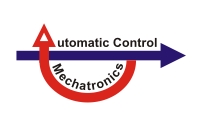7. Design of Exitation Signals for Identification
Goals
- Excitation of all relevant frequencies and amplitudes.
- Uniform coverage of the input space with data.
Approach: OMNIPUS − Optimal Excitation Signal Generator
- Building a signal generator, not restricted to a special signal type like APRBS, chirp, etc.
- Model-free (only rough assumption about dominate pole required).
Advantages
- Universally applicable.
- Constraints can be incorporated easily (e.g. input or input rate limits).
- Can be utilized for optimizing the data distribution of already existing measurements.
- Can be extended to the multivariate case (multiple inputs).
- Can be tailored to specific dynamic realizations (NARX, NOBF, NFIR).
Popular Excitation Signals
Interpretation of an Input Space in NARX Configuration
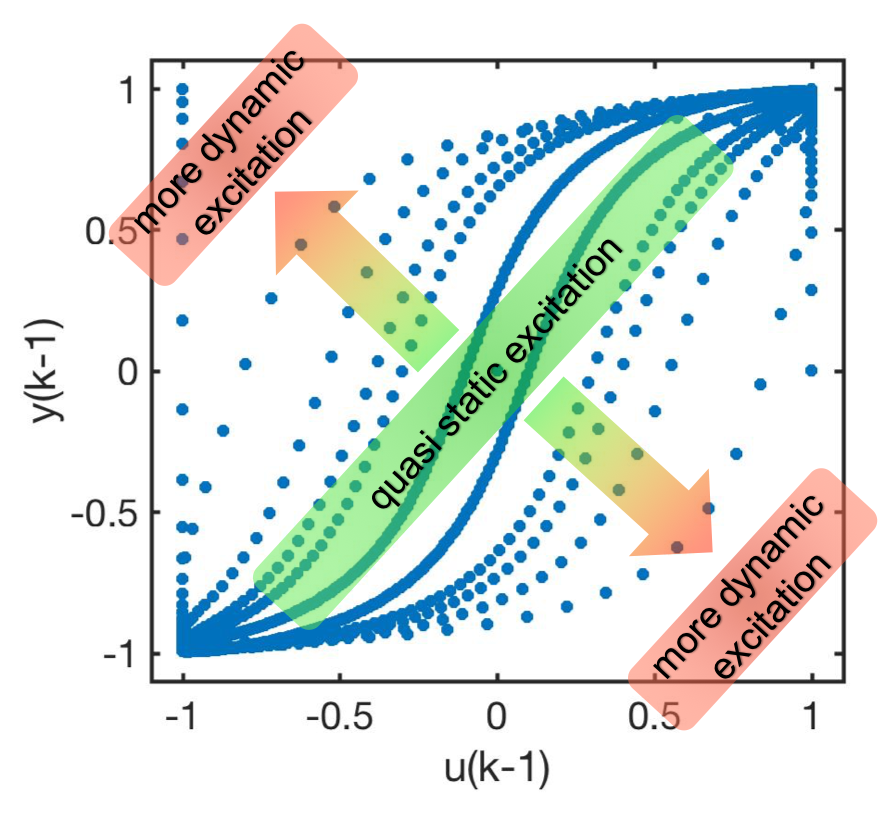
- Classification of regions in the input space:
- Quasi-static region along the diagonal
- More dynamic excitation towards upper left and lower right corner - A good approximation of the system in high dynamic regions is necessary for high performance control (e.g.: MPC based)
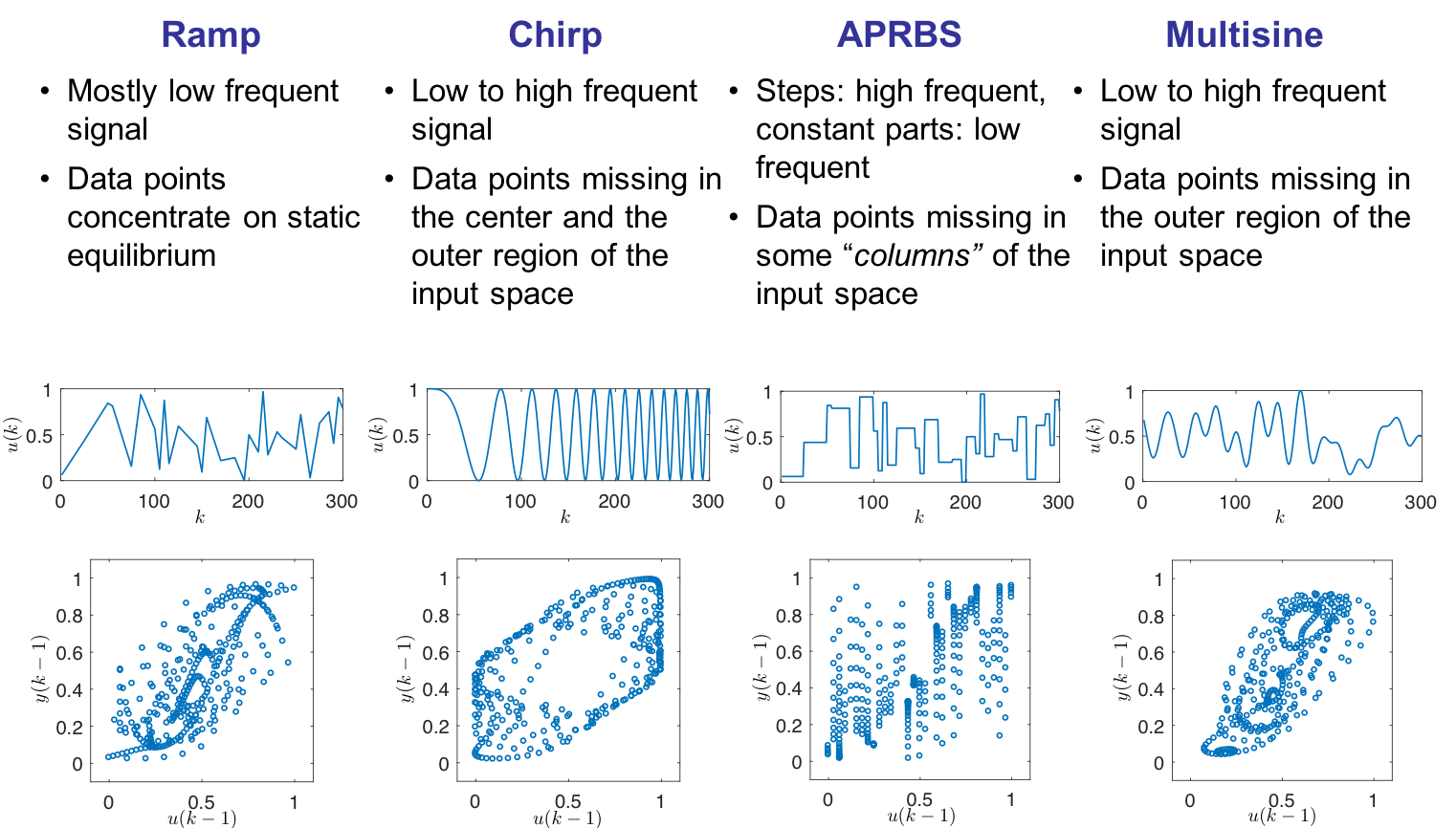
Optimized Excitation Signal
Optimization of Sequences
- Instead of N-dimensional optimization of u(1), u(2), …, u(N):
- Iterative optimization:
- Subsequent 2-dimensional optimizations
- Amplitude and sequence length as optimization parameters
⇒ Increased robustness - Scalable to multiple inputs
Optimization result:
OptiMized Nonlinear InPUt Signal (OMNIPUS)

Optimization of Sequences
- Sequence with highest quality is appended to the signal
- Quality function:
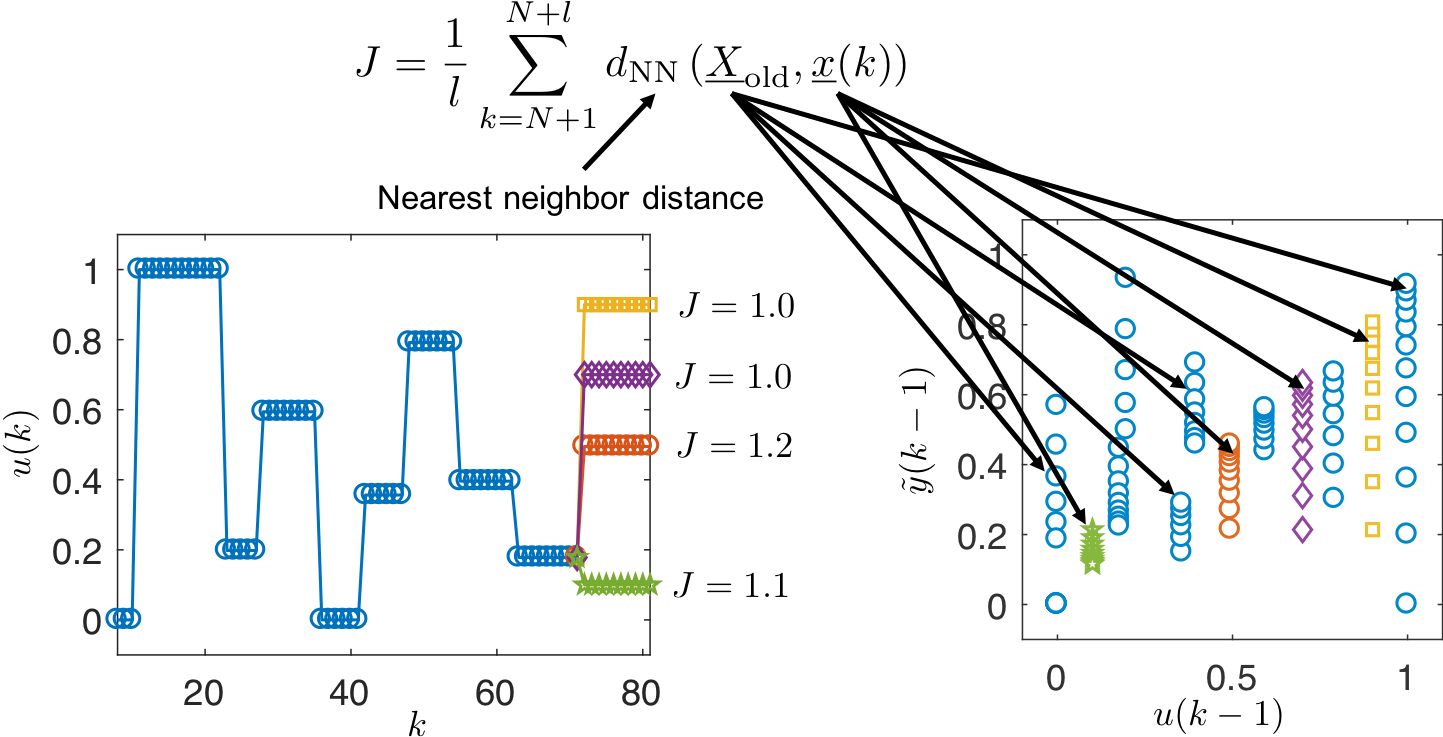
- Iterative optimization
- Taking the “old” signal into account
- Future sequence are not considered in the optimizatio
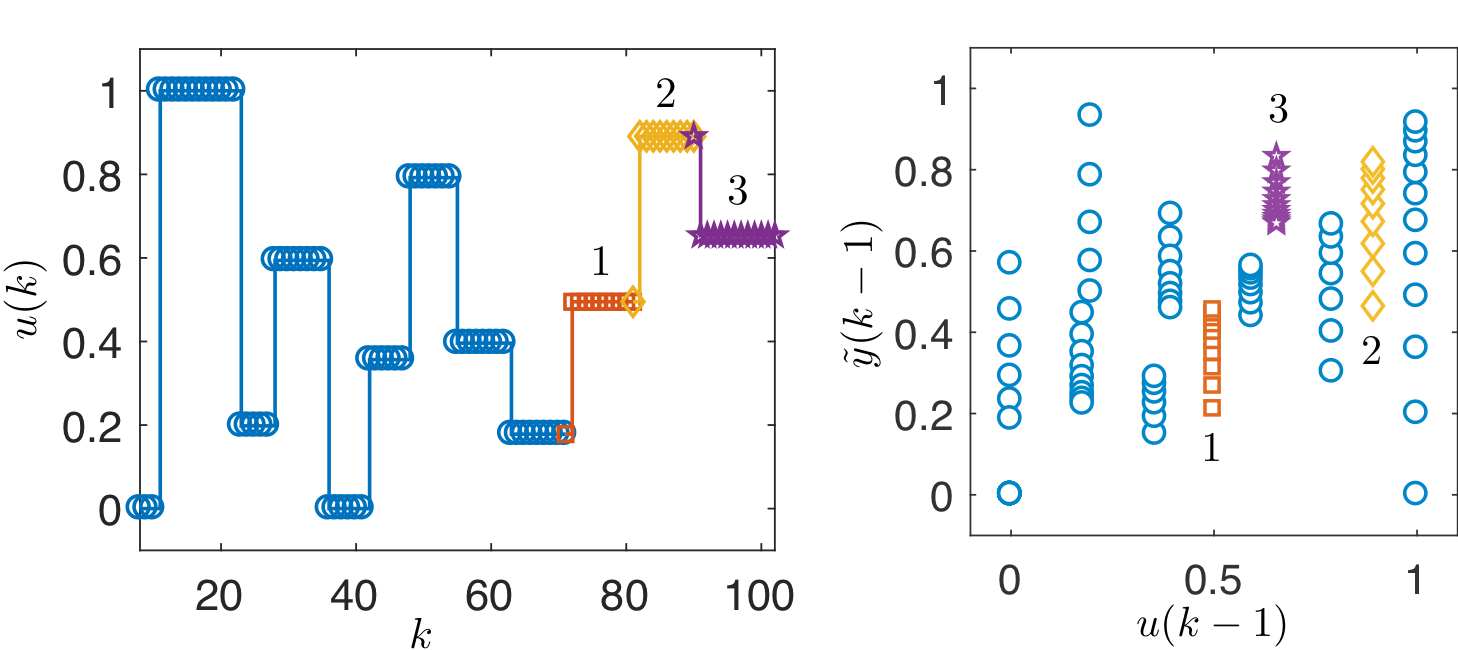
Implementation of Constraints
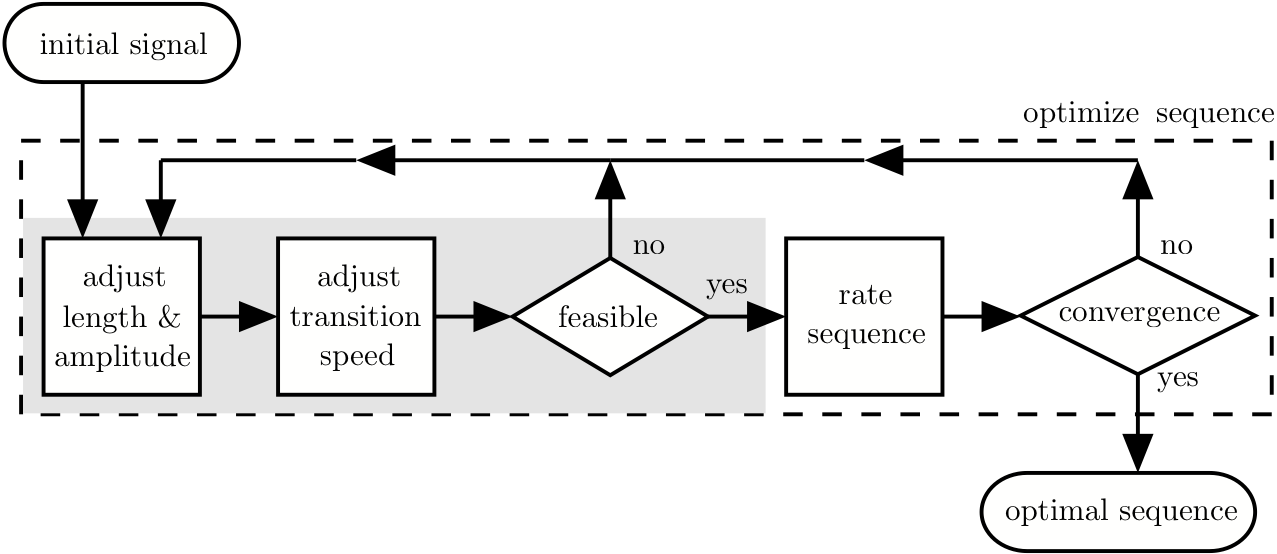
- Most processes have input constraints:
- Amplitude constraints
- Velocity/Rate constraints
- Higher order constraints (acceleration constraints) - Gray shaded area highlights constraint handling
- Checking of feasibility
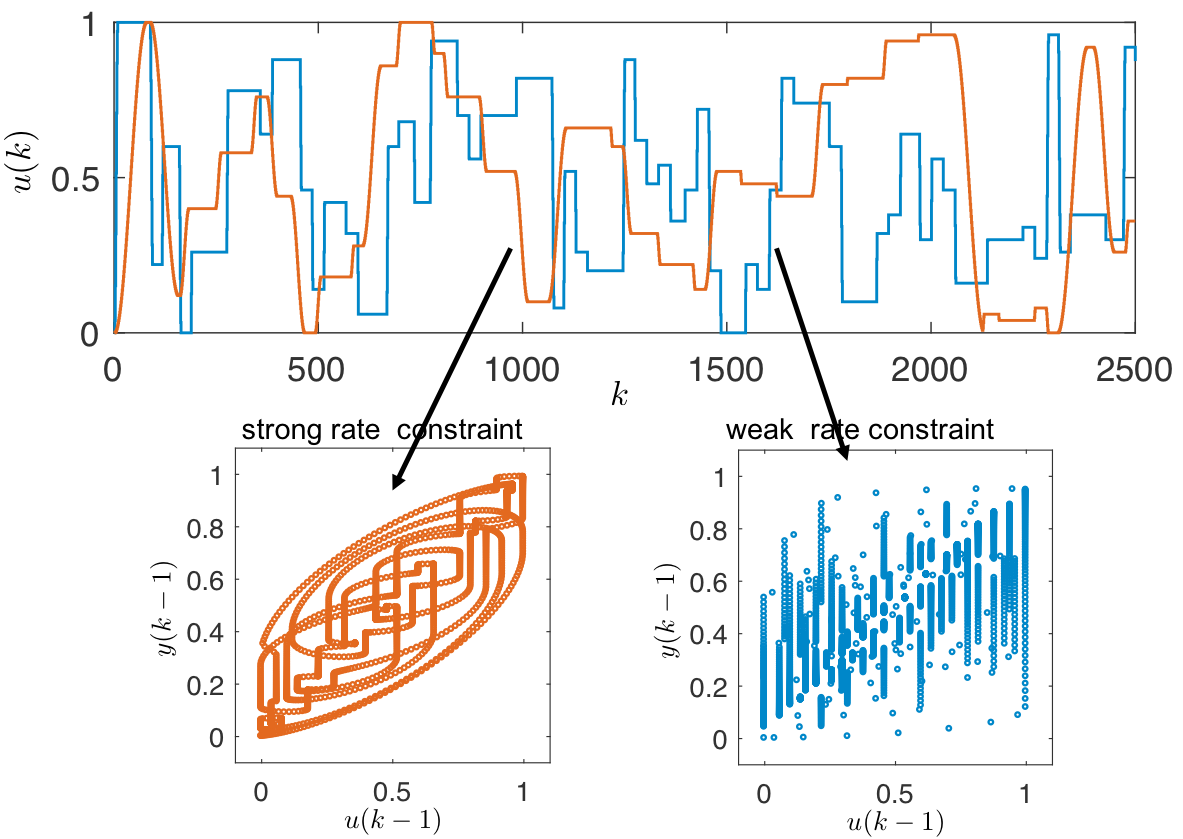
- Increasing restrictions:
⇒ Decreasing feasible regions of (pseudo) input space
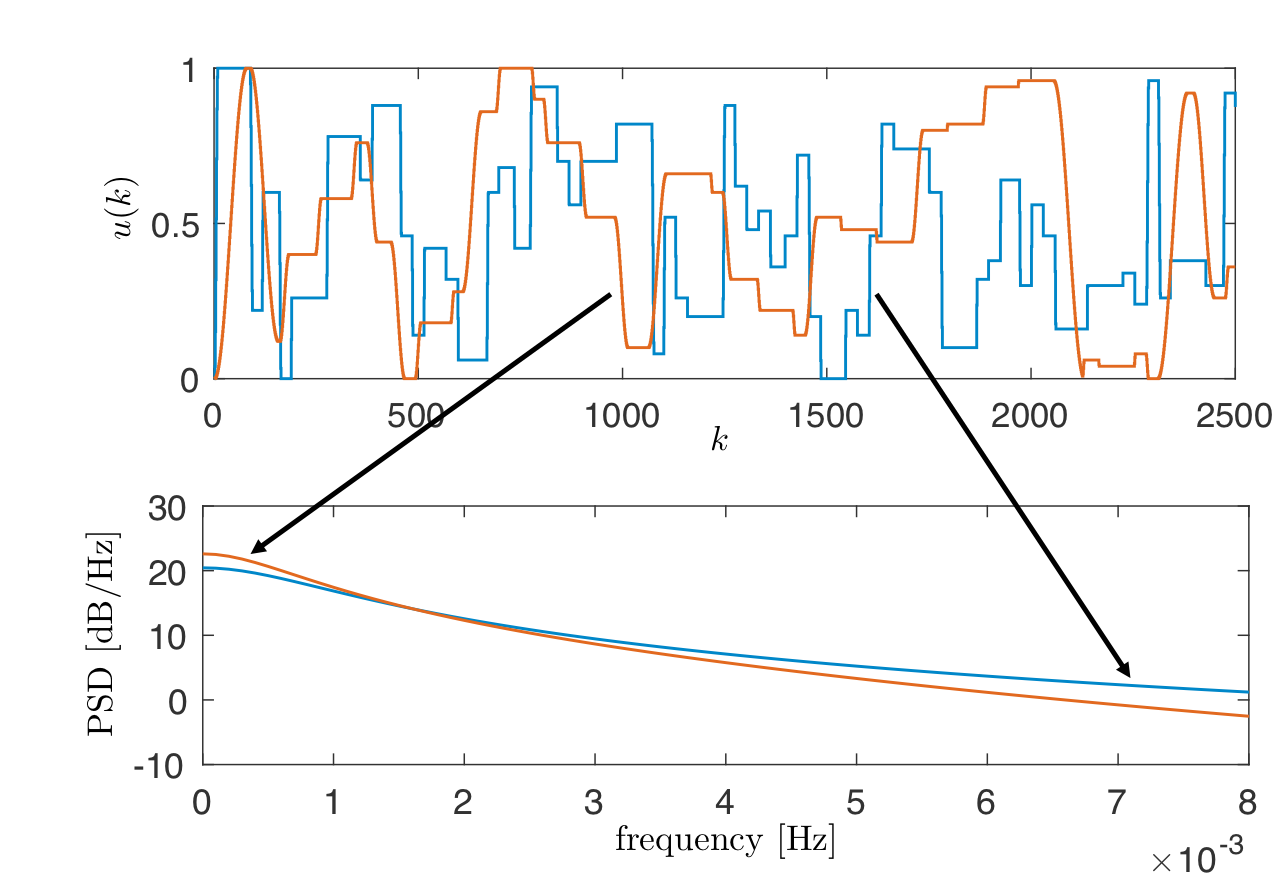
- Increasing restrictions:
⇒ Lower frequent signals
Example: The High Pressure Fuel Supply System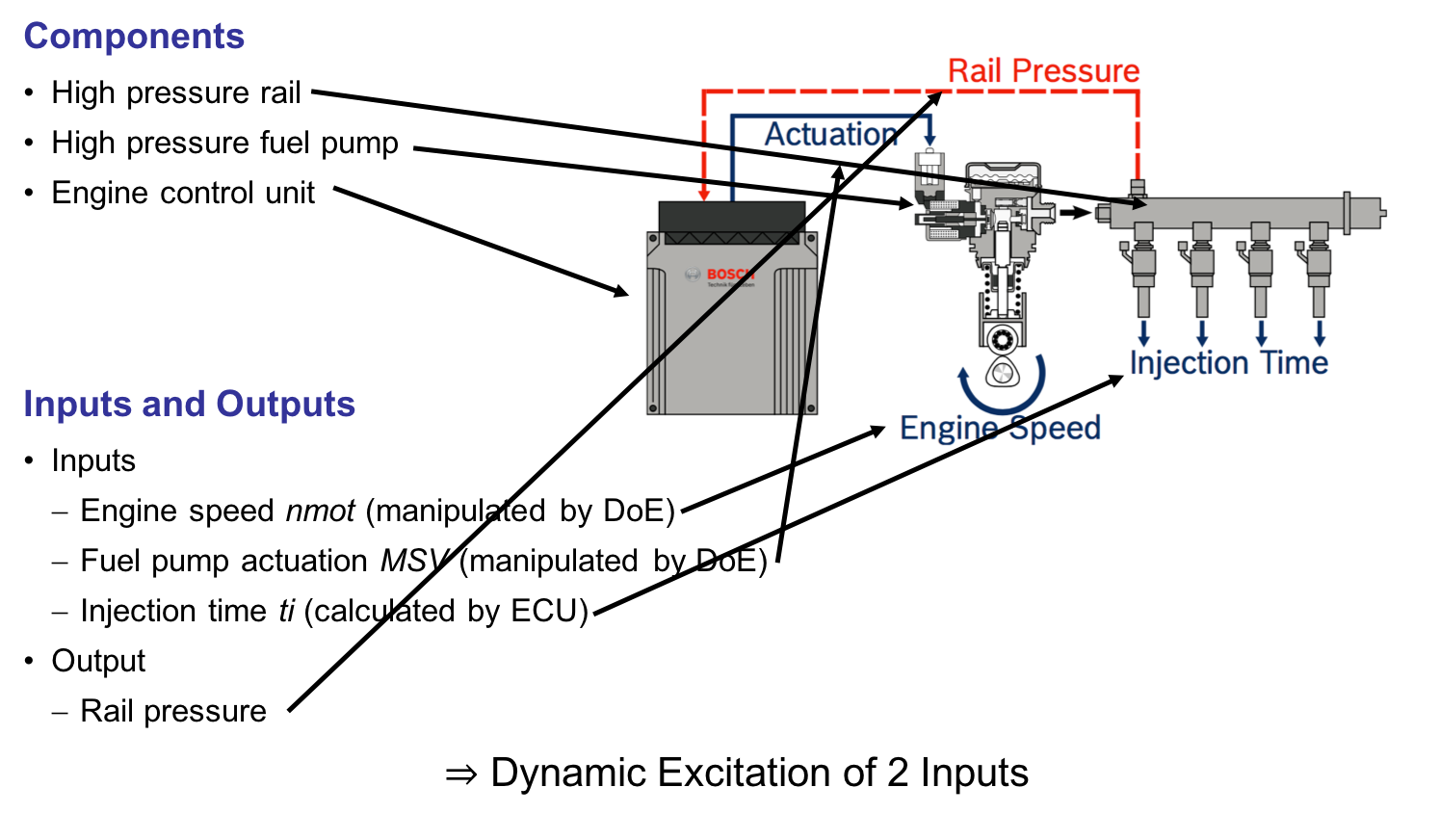
Results
Qualitative Analysis – Local Models Networks
- Ramp-chirp significantly worse in steady-state regions
- Model simulates negative rail pressure occasionally! - OMNIPUS model fits the test data best
- Significant difference between OMNIPUS model and ramp-chirp mode

- High differences in error values
- OMNIPUS data mostly significantly better

Conclusions
Popular Signal Types
- Popular excitation signals for nonlinear identification are analyzed
- Input space coverage is discussed
OMNIPUS
- Objective is similar to static DoE strategies: Uniform data distribution
- Input space established with linear model
- Iterative optimization of excitation signal
- Increased robustness due to subsequent 2-dimensional optimizations - Easy implementation of constraints
Results on the High Pressure Fuel Supply System
- OMNIPUS covers extreme regions of the input space with data
- OMNIPUS reveals infeasible regions of the input space
- Ramp-chirp shows dramatically wrong extrapolation behavior
